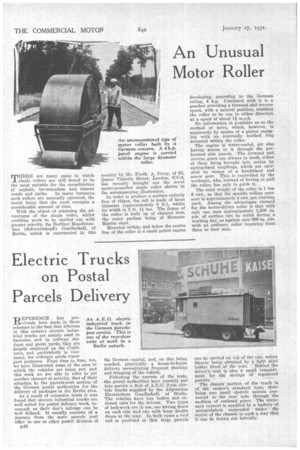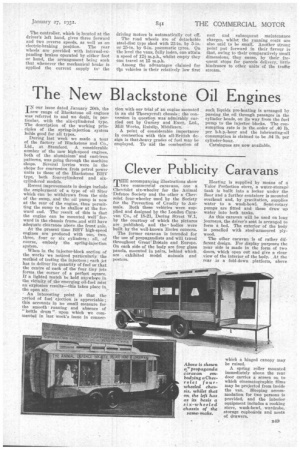Electric Truck on Postal Parcels Delivery
Page 66

Page 67

If you've noticed an error in this article please click here to report it so we can fix it.
REFERENCE . has previouslyvionsly been Made in these columns to the fact that whereas in this country electric industrial trucks are mainly used in factories and in railway stations and goods yards;they are largely employed on the Continent, and particularly in Germany, for ordina,ry goods transport purposes. From time to time, too, we have illustrated some of the uses to which the vehicles are being put, and this week we are able to refer to yet another channel of activity, that of their adoption by the parcels-post section of the German postal authorities for the delivery of packages in the Berlin area.
As a result of extensive trials it was found that electric industrial trucks are well suited for postal delivery work, inasmuch as their day's mileage can be well defined. It usually consists of a journey from the main parcels post office to one or other postal division of the German capital, and, on this being reached, practically. a house-to-hotiSe delivery necessitating frequent starting
and stopping of the vehicle. "
Following the success of the tests, the postal authorities hive regently pat into service a fleet of A.E.G. 2-ton eleetrio trucks supplied by the Allgeraeitm Electricitats Gesellschaft, of Berlin. The vehicles have van bodies and enclosed cabs for the drivers. Two types of bodywork are in use, one having doors on each side and one with large driuble doors at the rear.' In both cases a roof rail is provided so that large Parcels can bc carried on top of thevan, access thereto 'being obtained by a light steel ladder fitted at the rear. Behind the driver's 'seat is also '6 small .COmpartment for the storage of ' registered
parcels.
The chassis portion of the truck is of. the maker's standard type, there being two 'small eleetric motors connected to the rear 'axle through' the medium of enclosed gears. The necessary current is supplied by a -battery-of aecumulators 'sitspended under '`• the ' centre: of the chassis-in''sticha way that it can be drawn tiut laterally.
The controller, which is located at the driver's left hand, gives three forward and two reverse speeds, as well as an electric-braking position. The rear wheels are provided with internal-expanding brakes operated by either foot or hand, the arrangement being such that whenever the mechanical brake is applied the current supply to' the driving motors is automatically cut off.
The road wheels are of detachable steel-disc type shod with 23-in. by 5-iu. or 25-in, by 6-in. pneumatic tyres. On the level the vans, fully laden, can attain a speed of 12,i m.p.h., whilst empty they can travel at 15 m.p.h.
Among the advantages claimed for tile vehicles is their relatively low first cost and subsequent maintenance charges, whilst the running costs are also said to be small. Another strong point put forward in their favour is that, owing to their comparatively Small dimensions; they cause, by their fro. quent stops for -parcels delivery; little hindrance to other units of the traffic stream.




































































































